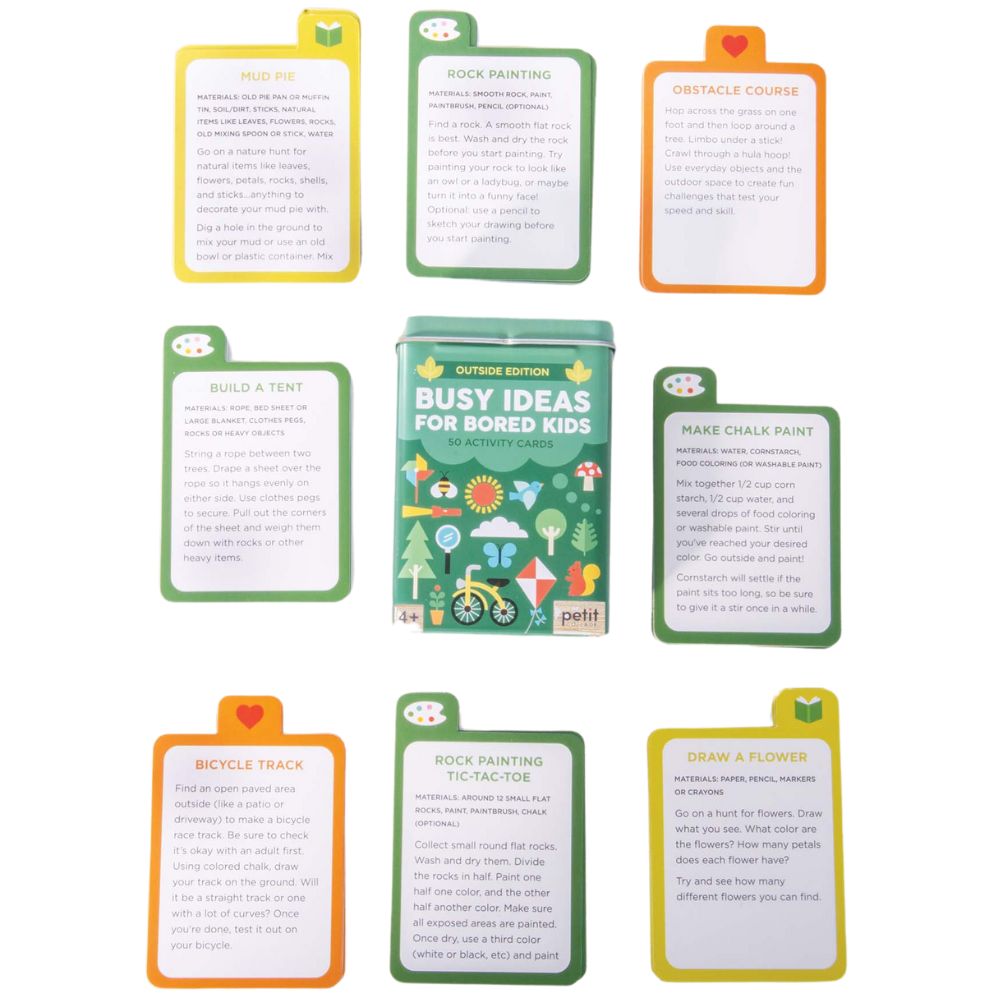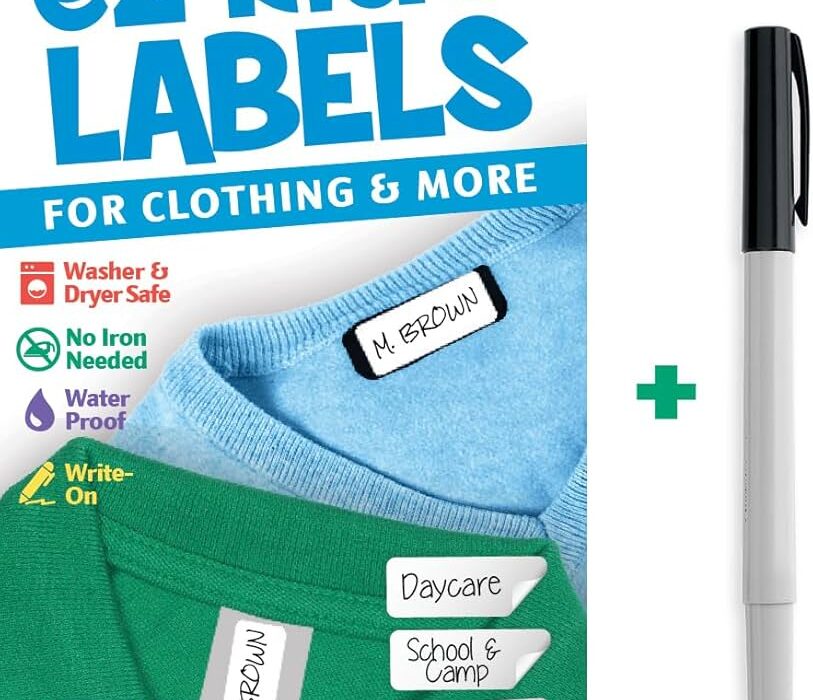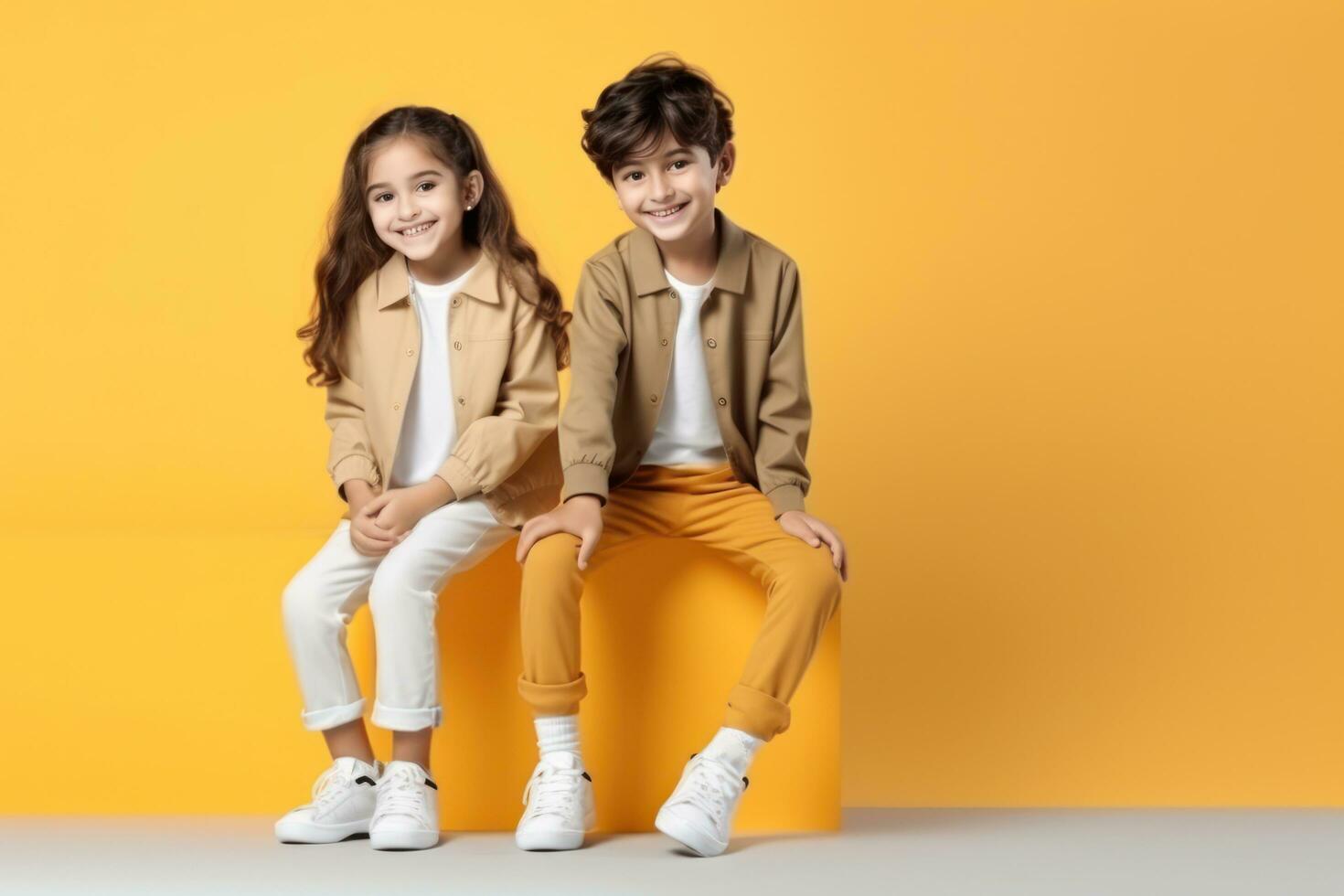Yes, kids’ fashion can absolutely include sustainable materials. Many brands now focus on eco-friendly fabrics like organic cotton and recycled polyester.
Sustainable materials are becoming increasingly popular in kids’ fashion. Parents are more aware of the environmental impact of clothing production. Brands are responding by offering styles made from organic and recycled materials. These fabrics are not only eco-friendly but also safe for children’s sensitive skin.
Sustainable fashion promotes a healthier planet while teaching kids the importance of eco-conscious choices. With vibrant designs and comfortable fits, sustainable kids’ clothing can be both stylish and responsible. Shifting towards these materials helps reduce waste and supports ethical manufacturing practices, creating a brighter future for our children.
Table of Contents
The Rise Of Sustainable Fashion
Sustainable fashion is gaining popularity. Parents care about the planet. Kids’ clothing can be stylish and eco-friendly. More brands focus on using sustainable materials. This shift is important for the future.
Why Sustainability Matters
Sustainability is essential for many reasons:
- Protects the environment
- Reduces waste
- Supports ethical labor practices
- Promotes healthy living
Parents want to raise kids who care. Teaching sustainability helps children understand their impact. They learn to make better choices.
Fashion’s Environmental Impact
Fashion harms the environment in several ways:
| Impact | Details |
|---|---|
| Water Pollution | Textile dyes and chemicals harm water sources. |
| Waste Production | Fast fashion creates tons of textile waste. |
| Carbon Emissions | Transportation and production produce greenhouse gases. |
Kids’ fashion can lessen these impacts. Choosing sustainable materials helps protect the Earth.
More brands are using organic cotton, recycled polyester, and bamboo. These materials are eco-friendly and safe for kids. Sustainable fashion is not just a trend; it’s the future.
Sustainability Meets Kids’ Fashion
Kids’ fashion is evolving. Parents want clothes that are not only stylish but also eco-friendly. Sustainable materials are becoming popular. They help the planet and support a healthy future for our children.
The Growing Market For Eco-friendly Kids’ Wear
The demand for sustainable kids’ fashion is rising. More brands focus on eco-friendly materials. Here are some key reasons:
- Health Benefits: Organic fabrics are safer for children.
- Environmental Impact: Eco-friendly materials reduce pollution.
- Quality: Sustainable clothes often last longer.
- Awareness: Parents care about their children’s future.
Many brands now offer collections made from:
| Material | Benefits |
|---|---|
| Organic Cotton | No harmful chemicals used. |
| Bamboo | Biodegradable and soft on skin. |
| Recycled Polyester | Reduces plastic waste. |
| Linen | Durable and requires less water. |
Challenges In Creating Sustainable Kids’ Fashion
Creating sustainable kids’ fashion comes with hurdles. Here are some of the main challenges:
- Cost: Eco-friendly materials can be expensive.
- Availability: Not all brands have access to sustainable sources.
- Consumer Awareness: Some parents may not know about sustainable options.
- Design Limits: Finding trendy styles can be difficult.
Despite these challenges, the future of kids’ fashion looks bright. More brands are stepping up to make a difference. Sustainability is not just a trend; it’s a movement. Kids deserve a fashionable, eco-friendly wardrobe.
Benefits Of Sustainable Materials In Kids’ Clothing
Sustainable materials in kids’ fashion offer many advantages. They promote health, safety, and environmental care. Choosing sustainable options ensures better choices for our children and the planet.
Health And Safety Benefits
Using sustainable materials in kids’ clothing has key health benefits:
- Non-toxic fibers: Organic cotton and bamboo are safe.
- Less irritation: Natural fabrics reduce skin allergies.
- Breathable materials: They keep kids comfortable and cool.
Parents can trust these materials. They protect children from harmful chemicals. Safe clothing promotes healthy skin and overall wellness.
Environmental Advantages
Sustainable materials help the environment in several ways:
| Advantage | Description |
|---|---|
| Reduced Waste | Eco-friendly fabrics lead to less landfill waste. |
| Lower Carbon Footprint | Sustainable production uses less energy and resources. |
| Water Conservation | Organic farming uses less water than conventional methods. |
Sustainable materials help preserve nature. Choosing them means supporting eco-friendly practices. Kids can enjoy stylish clothing that protects the earth.
Popular Sustainable Materials For Kids’ Clothing
Kids’ fashion can be fun and eco-friendly. Sustainable materials help protect our planet. They are safe for children and stylish too. Here are some popular sustainable materials for kids’ clothing.
Organic Cotton
Organic cotton is grown without harmful chemicals. It is soft and breathable. This makes it perfect for kids’ sensitive skin. Here are some benefits:
- No pesticides used in farming
- Better for the environment
- Durable and long-lasting
Many brands offer organic cotton options. Look for certifications like GOTS (Global Organic Textile Standard). This ensures the cotton is truly organic.
Recycled Fabrics
Recycled fabrics are made from old materials. This reduces waste and pollution. Common recycled materials include:
- Plastic bottles (rPET)
- Old clothes
- Used textiles
Using recycled fabrics saves energy and resources. It also reduces the need for new raw materials. Kids’ clothing made from recycled fabrics is both stylish and eco-friendly.
Innovative Sustainable Materials On The Rise
Kids’ fashion is evolving rapidly. Sustainable materials are now at the forefront. Designers focus on using eco-friendly options. These materials help protect our planet. They offer comfort and style for children.
Bamboo Fibers
Bamboo fibers are gaining popularity. They are soft and breathable. Here are some benefits of bamboo fibers:
- Eco-friendly: Bamboo grows quickly and needs little water.
- Natural antibacterial: Keeps clothes fresher for longer.
- Biodegradable: Breaks down naturally after disposal.
Many brands are now creating cute bamboo outfits. Parents love the sustainable aspect. Kids enjoy the comfort it provides.
Milk Silk And Other Novel Materials
Milk silk is a fascinating new fabric. It comes from casein, a protein in milk. This material is soft and silky. It has unique properties:
- Soft texture: Feels gentle against the skin.
- Durable: Stands up to active play.
- Eco-friendly: Made from a renewable resource.
Other novel materials are also emerging. Here are a few examples:
| Material | Source | Benefits |
|---|---|---|
| Pineapple Leather | Pineapple leaves | Vegan and durable |
| Recycled Polyester | Plastic bottles | Reduces waste and conserves resources |
| Hemp | Hemp plant | Strong and grows quickly |
These innovative materials make kids’ fashion exciting. They also promote sustainability. Kids can look great while helping the planet.
The Lifecycle Of Sustainable Kids’ Clothing
Sustainable kids’ clothing focuses on the entire lifecycle of garments. This includes how they are made, used, and disposed of. Understanding this lifecycle helps parents make better choices. Sustainable materials reduce harm to the environment. Let’s explore this lifecycle step by step.
From Production To Disposal
The journey of sustainable clothing starts at production. Here’s how:
| Stage | Description |
|---|---|
| Production | Use of organic fabrics and low-impact dyes. |
| Transport | Minimize carbon footprint through local sourcing. |
| Usage | Durable clothing for long-lasting wear. |
| Disposal | Recycling or composting instead of landfills. |
Each stage plays a vital role. Choosing brands that prioritize sustainability helps reduce waste. Parents can teach kids the importance of caring for their clothes. This includes washing them properly and repairing when needed.
Encouraging A Circular Economy
A circular economy keeps resources in use longer. Here’s how it benefits kids’ fashion:
- Reusing: Hand-me-downs can be shared among siblings.
- Recycling: Old clothes can be transformed into new products.
- Repairing: Simple fixes can extend the life of clothing.
- Renting: Kids can wear trendy outfits without buying them.
Encouraging a circular economy teaches kids responsibility. They learn the value of sustainability. This mindset prepares them for a greener future.
How To Identify Truly Sustainable Kids’ Fashion
Finding sustainable kids’ fashion can be tricky. Many brands claim to be eco-friendly. Knowing how to identify these brands helps make better choices. Look for specific signs that prove sustainability.
Certifications To Look For
Certifications provide proof of a brand’s commitment to sustainability. Here are some important certifications:
| Certification | Description |
|---|---|
| GOTS | Global Organic Textile Standard. Ensures organic fibers. |
| OEKO-TEX | Tests for harmful substances in textiles. |
| Fair Trade | Guarantees fair wages and safe conditions for workers. |
| Cradle to Cradle | Focuses on sustainable product lifecycle. |
Understanding Labels And Claims
Brands use different labels to describe their products. Not all claims are true. Here are some common terms:
- Eco-Friendly: Indicates a low environmental impact.
- Organic: Made from natural materials without harmful chemicals.
- Recycled: Made from materials that have been reused.
Check the labels carefully. Look for clear explanations. Avoid vague terms like “green” or “natural.” These words often lack specific meaning. Always verify the brand’s claims through research.
Challenges In Adopting Sustainable Fashion For Kids
Adopting sustainable fashion for kids presents several challenges. Parents face concerns about cost, availability, and accessibility. Understanding these hurdles helps in making better choices.
Cost Concerns
One of the biggest challenges is the cost of sustainable clothing. Here are some key points:
- Sustainable materials often have a higher price tag.
- Organic cotton and recycled fabrics can be more expensive.
- Budget constraints limit options for many families.
Many parents want to support sustainable brands. Yet, the higher prices can discourage purchases. A table below shows average costs:
| Type of Clothing | Traditional Cost | Sustainable Cost |
|---|---|---|
| T-shirt | $10 | $20 |
| Pants | $15 | $30 |
| Dress | $20 | $40 |
Availability And Accessibility
Finding sustainable kids’ fashion can be tricky. Availability and accessibility are major issues:
- Many sustainable brands are online only.
- Not all stores stock eco-friendly options.
- Some areas lack retailers focused on sustainability.
Parents often struggle to find these items locally. This can make sustainable choices feel out of reach. Supporting local shops can help. Here are some suggestions:
- Check local boutiques.
- Visit farmers’ markets.
- Explore second-hand shops for eco-friendly finds.
The Role Of Brands In Promoting Sustainability
Brands play a crucial role in promoting sustainable fashion for kids. They can influence choices by using eco-friendly materials. Kids’ fashion should not just be stylish; it should also be kind to the planet.
Many brands are now shifting their focus. They aim to create clothing that is both trendy and sustainable. This change helps teach children the value of caring for the environment.
Leading Brands In Sustainable Kids’ Fashion
Several brands stand out in the world of sustainable kids’ fashion. Here are some notable names:
| Brand Name | Sustainable Practices |
|---|---|
| Mini Rodini | Uses organic cotton and recycled materials. |
| Frugi | Focuses on fair trade and eco-friendly fabrics. |
| Patagonia | Promotes repairing and recycling clothing. |
| H&M Conscious | Offers collections made from organic and recycled materials. |
How Brands Can Influence Change
Brands can create a positive impact in many ways. Here are some effective strategies:
- Use Eco-Friendly Materials: Choose organic cotton, linen, or recycled fibers.
- Educate Consumers: Share information about sustainability in marketing.
- Promote Transparency: Show the supply chain and production methods.
- Encourage Recycling: Offer programs for old clothes.
Brands can also collaborate with other organizations. This can amplify their message and reach more families. By leading by example, brands set a standard for others. They help create a future where kids’ fashion is sustainable and responsible.

Credit: www.walmart.com
Consumer Responsibility And Sustainable Choices
Kids’ fashion can be exciting and eco-friendly. Parents hold the power to shape a sustainable future. By choosing brands that use sustainable materials, they can make a difference. This section explores how consumer choices impact sustainability in kids’ fashion.
Making Informed Purchases
Understanding what makes fashion sustainable is essential. Here are key points to consider:
- Material Types: Look for organic cotton, recycled polyester, and bamboo.
- Brand Transparency: Choose brands that share their sourcing and production practices.
- Durability: Select clothes that last longer, reducing waste.
- Second-hand Shopping: Thrift stores and swaps save money and resources.
Parents can educate kids about these choices. Teach them to ask questions about where clothes come from. This builds awareness and encourages responsible shopping habits.
The Impact Of Consumer Demand On Sustainability
Consumer demand drives the fashion industry. When parents buy sustainable kids’ clothes, brands notice. They start to produce more eco-friendly options.
| Consumer Action | Industry Response |
|---|---|
| Buying sustainable products | Increased production of eco-friendly items |
| Supporting ethical brands | Improved labor practices |
| Participating in clothing swaps | Less waste in landfills |
Each purchase counts. Parents can inspire change by choosing wisely. Kids learn the importance of sustainability through their choices.
Sustainable Fashion Beyond Clothing
Sustainable fashion is not just about clothing. It includes accessories and footwear too. Kids can express their style while being eco-friendly. This approach helps protect the environment. Let’s explore some exciting options for sustainable accessories and footwear.
Eco-friendly Accessories For Kids
Accessories can make any outfit special. Choosing eco-friendly options helps the planet. Here are some popular choices:
- Recycled Jewelry: Made from old materials, these pieces are unique.
- Organic Cotton Hats: Soft and safe, perfect for sunny days.
- Bamboo Sunglasses: Lightweight and stylish for sunny adventures.
- Upcycled Bags: Fun designs made from repurposed materials.
These accessories help kids look good while caring for the Earth.
Sustainable Footwear Options
Footwear plays a big role in kids’ fashion. Eco-friendly shoes are available for every occasion. Here are some top options:
| Type of Footwear | Materials Used | Benefits |
|---|---|---|
| Organic Cotton Sneakers | 100% organic cotton | Soft, breathable, and biodegradable |
| Recycled Plastic Sandals | Recycled plastic bottles | Durable and water-resistant |
| Bamboo Shoes | Bamboo and natural rubber | Eco-friendly and lightweight |
Sustainable footwear helps kids stay comfortable while protecting nature. These options are stylish and planet-friendly.
Educating The Next Generation On Sustainability
Teaching kids about sustainability is vital. Kids can learn the importance of using sustainable materials in fashion. Educating them helps build a greener future. Understanding eco-friendly choices leads to better decisions.
Incorporating Sustainability Into Lifestyle
Sustainable fashion can be fun for kids. Here are some simple ways to incorporate it into their lives:
- Choose clothes made from organic cotton.
- Support brands that use recycled materials.
- Encourage second-hand shopping.
- Teach kids to care for their clothes.
Making these choices creates awareness. Kids start to understand their impact on the planet. It’s a small step toward a sustainable lifestyle.
Teaching Kids About Environmental Responsibility
Kids can learn about their role in protecting the earth. Here are some effective teaching methods:
- Share fun facts about pollution and waste.
- Engage them in DIY projects using recycled materials.
- Take them on nature walks to explore ecosystems.
- Discuss the benefits of sustainable fashion choices.
Use games and activities to make learning enjoyable. Kids remember lessons better when they are fun. They will grow into responsible adults who care for the environment.
| Activity | Benefits |
|---|---|
| Nature Walks | Connects kids to nature and its beauty. |
| DIY Projects | Encourages creativity and recycling. |
| Reading Books | Increases knowledge about sustainability. |
Making sustainability a fun part of everyday life helps kids learn. They become mindful consumers. This education shapes their future choices.
The Future Of Sustainable Kids’ Fashion
The future of kids’ fashion is bright and green. Parents want stylish clothes that are also good for the planet. Sustainable materials are becoming popular. Brands are taking notice. They aim to combine fun and eco-friendly designs.
Trends To Watch
- Organic Cotton: Grown without harmful chemicals.
- Recycled Fabrics: Made from old clothes and materials.
- Natural Dyes: Colors from plants and minerals.
- Durable Clothing: Designed to last and grow with kids.
- Minimalist Designs: Simple styles that are timeless.
| Trend | Description |
|---|---|
| Organic Cotton | Soft fabric without harmful chemicals. |
| Recycled Fabrics | Eco-friendly material from old clothes. |
| Natural Dyes | Colors from nature, no toxins involved. |
| Durable Clothing | Long-lasting pieces that save money. |
| Minimalist Designs | Timeless styles that never go out. |
Long-term Impact On The Fashion Industry
Sustainable kids’ fashion will change the industry. Brands will focus on eco-friendly practices. This shift can reduce waste and pollution.
More consumers want to buy sustainable products. This demand encourages innovation.
Future generations will benefit from cleaner environments. Kids will grow up with responsible fashion choices.
Companies will invest in better materials. This creates jobs in eco-friendly sectors.
Fashion shows may highlight sustainability. Designers will showcase green collections.
Education about sustainable fashion is vital. Schools can teach kids about eco-friendly choices.

Credit: www.amazon.com

Credit: www.biomestores.com
Frequently Asked Questions
Can Kids Wear Eco-friendly Clothing?
Yes, kids can wear eco-friendly clothing made from sustainable materials like organic cotton, bamboo, and recycled fabrics.
What Are Sustainable Materials For Kids’ Fashion?
Sustainable materials include organic cotton, hemp, bamboo, and recycled polyester, all reducing environmental impact and promoting health.
Why Choose Sustainable Kids’ Clothing?
Choosing sustainable clothing minimizes environmental harm, supports ethical practices, and often ensures better quality for children’s delicate skin.
How Can I Find Sustainable Kids’ Brands?
Look for brands that prioritize eco-friendly materials, ethical manufacturing, and transparency in their production processes.
Is Sustainable Fashion More Expensive For Kids?
Sustainable fashion can be pricier, but it often offers better quality and longevity, making it a worthwhile investment.
Conclusion
Sustainable materials in kids’ fashion offer a promising future. Parents can make informed choices that benefit the planet. By selecting eco-friendly brands, you support both style and sustainability. Encouraging kids to embrace these values fosters a sense of responsibility. Together, we can shape a greener world for future generations.







